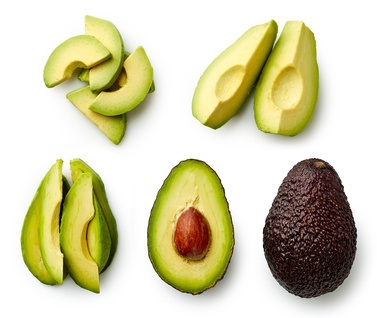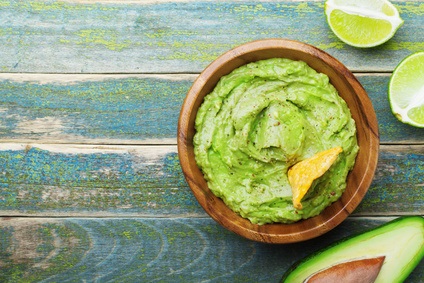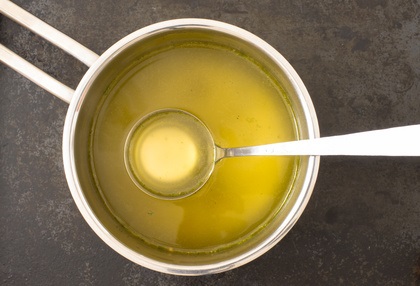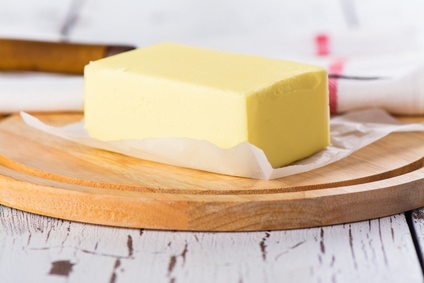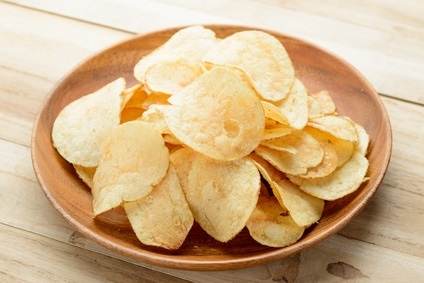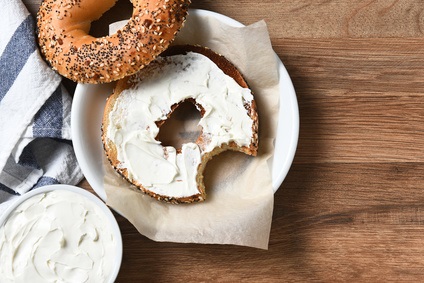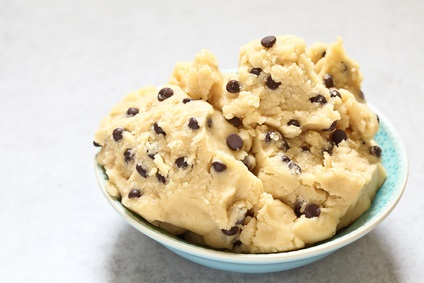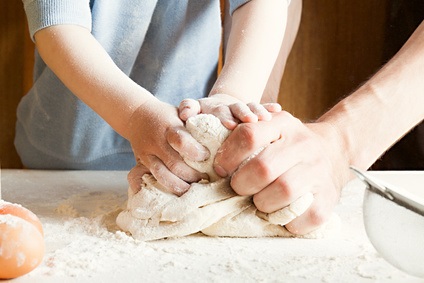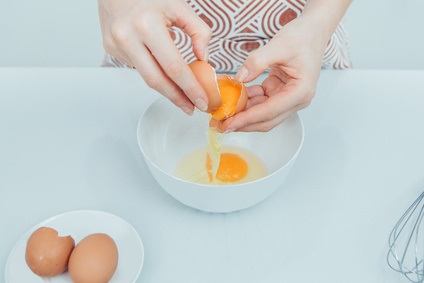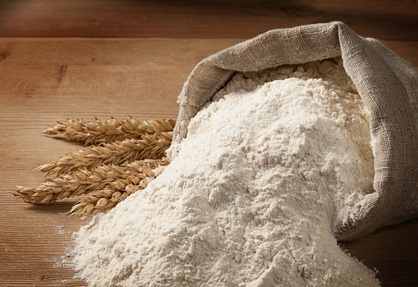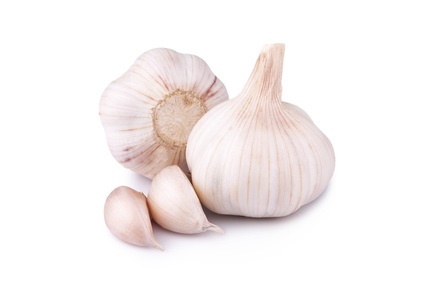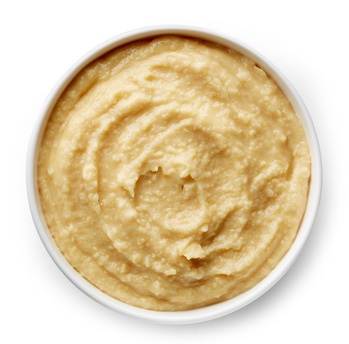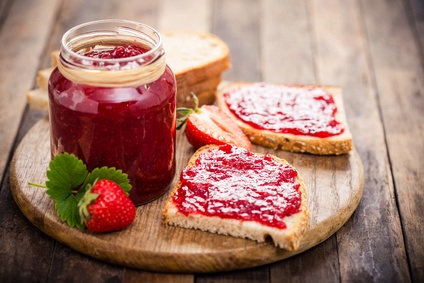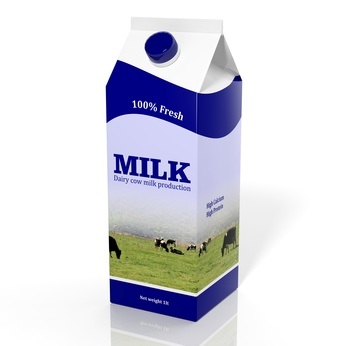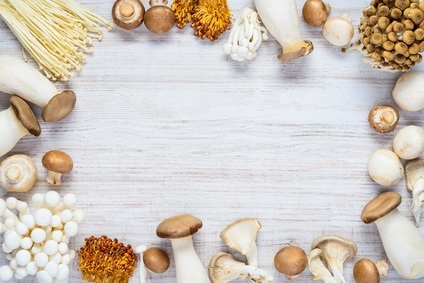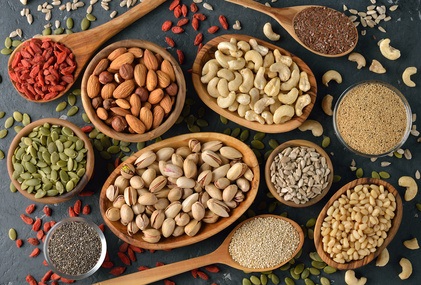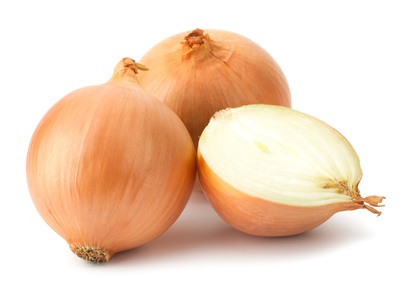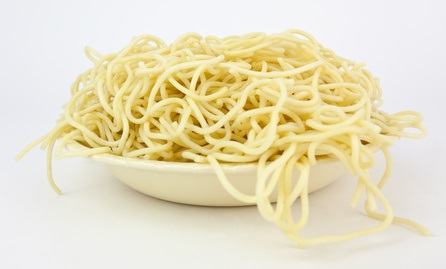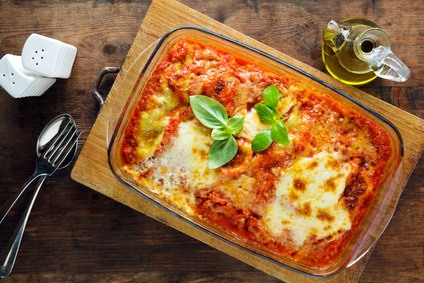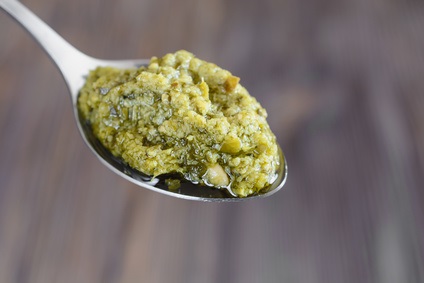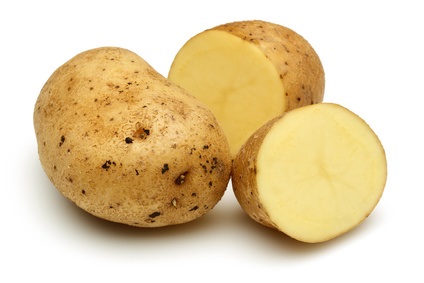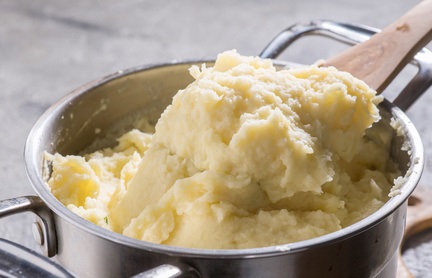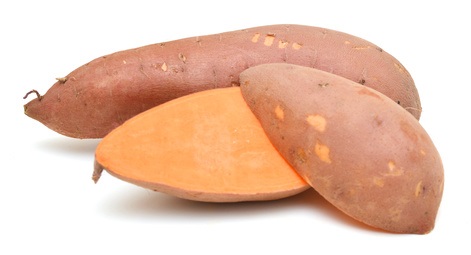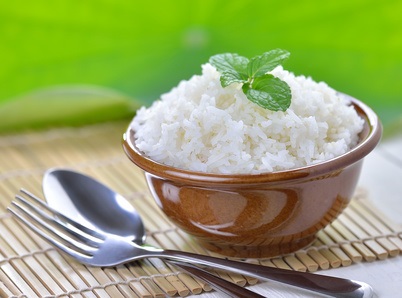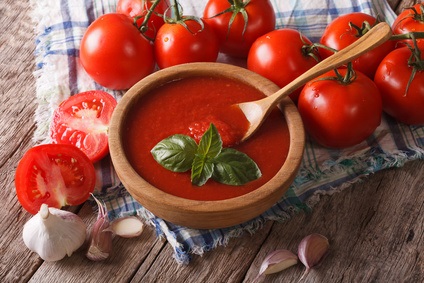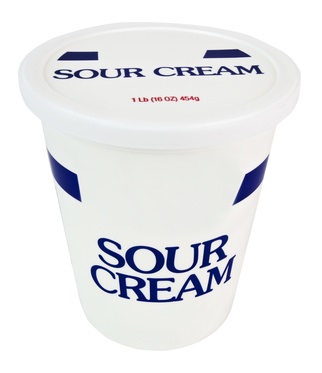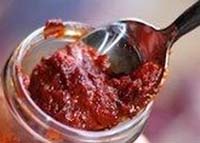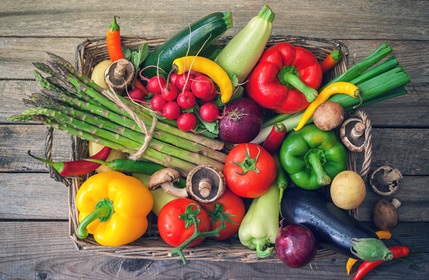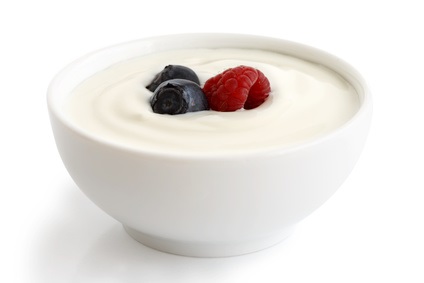FREEZING FOODS SAFELY
Freezing foods safely is a priority for all of us. Foods we typically freeze regularly like meat, certain vegetables, ice cream, etc., are obvious, but there are many other common foods that can be frozen as well, some you may not be aware of.
If we have knowledge of the proper procedures for freezing foods safely, we can extend the useful life of many foods before they spoil. We can also stock up on certain foods when they go on sale. Food waste can be kept to a minimum, saving both time and money.
We have put together a list of foods that can be safely frozen, for how long, and how to thaw and use them safely.
SUPPLIES TO HAVE ON HAND FOR FREEZING FOODS SAFELY
- Freezer bags and/or freezer-safe containers.
- Ice cube trays
- Markers
GENERAL TIMES
FOR FREEZING
FOODS SAFELY
(COMMON ITEMS):
- Cooked poultry — 4 months
- Uncooked poultry parts — 9 months
- Uncooked
whole poultry — 12 months
- Cooked meat — 2 to 3 months
- Uncooked roasts — 4 to 12 months
- Uncooked steaks or chops — 4 to 12 months
- Baked Goods:
Bagels-3 month
Baquettes-3 weeks
Biscotti-6 months
Bread-Bakery Loaf-3 weeks
Bread-Sandwich Loaf-3 months
Brownies-3 months
GENERAL RULES FOR
THAWING SAFELY AFTER
FREEZING FOODS SAFELY
- Do not refreeze most meats, dairy, and some veggies after thawing.
- Always cool down cooked foods before freezing. The addition of hot foods to the freezer can dangerously lower the temperature of surrounding food in the freezer.
- Wrap foods properly to avoid freezer burn.
- Freezing retards bacterial growth but it does not kill bacteria so make sure the food is still good before storing.
- Always use re-sealable freezer bags or freezer-safe plastic containers and label them with the date of storage.
A LIST OF FOODS YOU CAN SAFELY FREEZE:
AVOCADOS
There are a couple of methods for freezing avocados:
- If you are going to freeze avocados in halves, cut the avocados in half lengthwise by rotating a knife around each avocado. Once halved, separate the avocado halves by placing a hand on each half and rotating, twisting your hands in opposite directions. Then remove the pit. Cut a lemon in half and squeeze it over the avocado halves so the exposed fruit flesh is coated with lemon juice. Place 5 or 6 halves in each one-gallon freezer bag and freeze.
- If using avocados for guacamole, wash and cut the avocado in half before peeling and freezing. Cover the cut up avocado fruit with lemon juice and mash and mix thoroughly with a fork. You can also puree the avocado with lemon or lime juice and freeze in a freezer bag or airtight container.
How Long: They can be stored for up to 8 months.
How to Thaw: Thaw the avocado halves slowly to slow down the ripening and help to preserve the texture and color. This will take them longer to thaw but the results will be better. You can also place the frozen containers in cold water to defrost.
Caveat: The texture of avocados will change after freezing. A tip for keeping guacamole from going brown in the fridge: Store it in a bag or container with enough water to cover and put back into the fridge. Drain when ready to use and stir.
BROTH
Freezing leftover broth from cans or homemade soup saves time and money.
How to Freeze: Freeze the broth in ice trays. When frozen, transfer the cubes into freezer bags. Remove most of the air from the bags but leave a little bit of room for the liquid to expand. Lie flat so they can be stacked but wait 3 to 4 hours until solidly frozen before stacking.
How Long: 6 months to a year.
How to Thaw: Thaw by placing them in a sauce pan over low heat to melt the cubes. Caveat: Freeze in small portions, one or two cups per bag to use in recipes. It is not safe to thaw and then refreeze broth.
BUTTER
Butter is an excellent example of a food that can be stocked up on and frozen for future use.
How to Freeze: Keep it in its original wrapping, place it inside an airtight container or wrap it in foil for freezing.
How Long: Butter can be kept for months in the freezer and can be safely used in cooking and baking.
How to Thaw: Thaw the butter in the refrigerator overnight before using it.
Caveat: Do not refreeze butter and use the thawed butter from the freezer as soon as possible.
CHEESE
Soft and hard cheese will freeze differently and must be frozen separately.
How to Freeze: Store both inside original packaging and then wrap them in plastic wrap and then aluminum foil. Hard cheese can also be grated and put into freezer bags or freezer-safe containers.
How Long: Soft cheese will stay good for 1 month. Hard cheese can last for six months in the freezer but no longer.
How to Thaw: Thaw overnight in the refrigerator.
Caveat: Plan to use the thawed cheese within 2 to 3 days. The texture may be compromised but the defrosted cheese is safe for use in cooking.
CHIPS (POTATO and TORTILLA) and PRETZEL SNACKS
If you have room in the freezer, these items will freeze safely and will never freeze solid.
How to Freeze: Put the unopened or tightly closed open bags directly in the freezer.
How Long: 1 year.
How to Thaw: They will defrost quickly but can be eaten straight out of the freezer as well. They will taste cold and fresh!
Caveat: Make sure there is enough room so nothing heavy will fall on the bags or boxes.
You can also freeze crackers such as saltines, snack, and graham crackers, but be aware moisture can get in and spoil them. Keep them in smaller size bags to avoid opening and closing the same bags.
CITRUS SLICES-FRESH
Don’t let those lemons or limes you cut up to use in drinks or as garnishes go to waste!
How to Freeze: Remove as many seeds as possible and place each on a piece of wax paper with a piece of wax paper in between each piece or spread out onto a cookie sheet with parchment paper and freeze for at least 2 hours before placing them into a freezer bag.
How Long: 4 to 6 months.
How to Thaw: Thaw in the refrigerator.
Caveat: You can also freeze whole lemons and limes, but the freezing will break down the outer walls and they may become mushy, making them useless for garnishes.
COOKIES
Freezing cookies makes it possible to make a huge batch ahead of the holidays and then you can store any uneaten baked cookies for future use as well.
How to Freeze: Wrap cookies tightly in plastic and then in aluminum foil before putting them in an airtight container.
How Long: Cookies can last about a month in the freezer.
How to Thaw: Thaw at room temperature.
Caveat: As with anything cooked or baked, make sure they are cooled before freezing.
CORN ON THE COB
You can freeze corn on the cob but the preparation will be different for farm fresh corn on the cob vs. store bought corn on the cob.
How to Freeze: Farm fresh corn on the cob can be placed with the husk on directly into freezer bags. Remove the outer husk layer and the tassel first.
If the corn is store-bought, it must be husked and blanched before freezing. Blanching involves boiling the veggies briefly for 2 to 5 minutes and then submerging in ice water to stop the cooking. Blanching helps to preserve their color and texture. You can also remove the corn from the cob and freeze in bags.
How Long: 2 months.
How to Thaw: Thaw in the refrigerator.
Caveat: Storing whole corn in the freezer takes up a lot of space but being able to skip blanching is convenient. Keep in mind the longer the whole corn cob is stored in the freezer, the greater the chance it will start to lose texture and get mushy.
CREAM CHEESE
Cream cheese is another food item we don't usually use up quickly enough.
How to Freeze: Freeze cream cheese in its original packaging (if foil) or wrap tightly in aluminum foil.
How Long: Up to 3 months.
How to Thaw: Thaw in the refrigerator and use within 3 to 4 days.
Caveat: Cream cheese will change in consistency after it’s been frozen so only use for baking and cooking after freezing. The flavor may also be compromised. Use promptly. Never leave cream cheese at room temperature for more than 2 hours. Should mold appear, discard the entire package.
DOUGH
Cookie, pizza, and bread and pie crust dough can be prepared ahead of time and safely frozen.
How to Freeze: Especially for cookie dough, place directly into a freezer bag or scoop onto a cooking sheet and freeze in individual portions before placing in a freezer bag.
How Long: Most dough can last 6 months to a year if stored properly.
How to Thaw: Thaw at room temperature and then refrigerate.
Caveat: As with anything cooked or baked, make sure they are cool before freezing.
EGGS WITHOUT THE SHELLS
Eggs often go on sale so freezing is a good option. However, you can only freeze eggs if they are not in their shells.
How to Freeze: Crack the eggs into a bowl and mix them up a bit before freezing. Pour them into ice cream trays and freeze, a single egg to each cube. Then remove the cubes to freezer bags. You can also freeze egg whites and yolks separately.
How Long: Up to 6 months.
How to Thaw: Thaw in the refrigerator.
Caveat: Keep refrigerated and use promptly after defrosting.
FLOUR
Storing flour in the freezer, especially whole wheat flour because of its fat content, will extend its shelf-life almost indefinitely. Flour can also be kept for up to 2 years in the refrigerator in an airtight container.
How to Freeze: Because of those pesky bugs that can hatch in your flour, get the flour out of its original packaging and into an airtight container before freezing. The bugs will be killed off after 48 hours of freezing.
How Long: Indefinitely. Actually, bakers typically keep their flour in the freezer. It will stay fresher longer and makes tastier baked goods as well.
How to Thaw: Thaw and store in the refrigerator before using.Caveat: Moisture changes could cause self-rising flour to lose some of its effectiveness if frozen and then thawed. If you let cold flour from the freezer sit at room temperature, moisture from the air may also accumulate. Open container, take out what is needed and return as soon as possible to the freezer.
FROSTING
Frosting can also be frozen and is a great way to get some of that holiday work done ahead of time.
How to Freeze: The frosting must be placed in an airtight container in the freezer.
How Long: Up to 2 months.
How to Thaw: Thaw in the refrigerator.
Caveat: You may have to use a spoon to knead the frosting after it has defrosted to restore the texture.
FRUIT
You can freeze many fruits that you will not be using right away before they spoil.
How to Freeze: Cut up the fruit and put it on parchment paper in the freezer. Wait until solidly frozen and then put the frozen pieces into a freezer bag.
Whole bananas can go directly into the freezer with their skins on and make excellent ingredients for banana bread, no matter how ripe they were when they went into the freezer. (Actually, the more ripe the better).
How Long: No more than a year.
How to Thaw: Defrost at room temperature before using.Caveat: Fruits have high moisture content. They can get mushy in the freezer because freezing causes the water to expand which breaks down the cell walls. This happens especially if the fruit is overripe when frozen. Therefore, you may only be able to use for cooking and baking after defrosting.
GARLIC
Whole or chopped garlic will freeze well. You can also freeze roasted garlic cloves.
How to Freeze: Wipe any dirt off whole garlic bulbs and place in freezer bags. If you wish to separate the cloves out and freeze them that way, peel them first. You will then be able to take out as many as you need at a time. You can also cut them up before freezing. Wrap the peeled or peeled and cut cloves in aluminum foil and then place in freezer bags.
How Long: Use within 6 months.
How to Thaw: The whole bulb and peeled and cut cloves will not take long to thaw and you can also grate or chop them when they are still frozen.
Caveat: Some texture change will occur after garlic is frozen. It will be softer and more mushy.
You can also place the garlic in olive oil and freeze (2 parts oil to 1 part garlic). It may lose some of its texture but not the flavor. Freeze the mixture as soon as possible. Do not let it stand at room temperature to avoid food poisoning.
HERBS
Herbs spoil very quickly, especially if kept in the refrigerator. Chives, chervil, dill, fennel leaves, parsley, basil, cilantro, dill, and tarragon freeze best.
How to Freeze: Place fresh herbs on a cookie sheet on parchment paper and freeze them. Then place them inside an airtight container and put them in the freezer until you need to use them.
Herbs can also be frozen in olive oil or water. Chop the herbs and put in an ice cube tray. Cover with olive oil or water, allowing a little room at the top for expansion. Then transfer frozen cubes to a re-sealable bag.
How Long: Approximately 2 months.
How to Thaw: No need to thaw. They can be added right into soups and other recipes as is.
Caveat: Dried herbs can also be stored in the freezer, but if used regularly it is best not to freeze them because repeated opening and closing of the package can cause condensation which can compromise their effectiveness.
HUMMUS
How to Freeze: Freeze in airtight containers. Leave room at the top for expansion. You can also drizzle a thin layer of olive oil on top of the fresh hummus to keep it from drying out.
How Long: 6 months to as year.
How to Thaw: Thaw in the refrigerator the day before you want to use it. If there is some liquid on top, just stir. This will improve the consistency. Warming the hummus will also improve the consistency. Eat the thawed hummus within 5-7 days.
Caveat: The flavor may change, although hummus made with chickpeas tends to keep its flavor more. The change in flavor does not mean it is not edible. If the flavor becomes more bland, you can always add in some seasonings like garlic or fresh onions for more flavor.
JAM
Jam actually has a pretty long shelf life. It can last up to two years in the pantry when unopened. When opened, jam can last for six months in the refrigerator as long as the jar is well sealed.
How to Freeze: A jar of jam can be placed directly into the freezer. Make sure to leave space for expansion at the top.
How Long: Up to 12 months past the sell by date.
How to Thaw: Just let it thaw out overnight in the fridge when you are ready to use it.
Caveat: Changes in flavor and texture can happen over time.
JUICE-FRESH SQUEEZED
Freezing is a great way to retain the flavor and freshness of fresh squeezed juice. You can even save the rinds to make your cleaning solution smell great!
How to Freeze: Freeze in an ice cube tray and place the frozen cubes in an airtight container.
How Long: Up to 12 months.
How to Thaw: Thaw in the refrigerator
Caveat: Make sure to shake it up before using.
MILK
Milk spoils rather easily so why not freeze it before that happens.
How to Freeze: Pour out a little of the milk so there is enough room to expand inside the milk container. You can also freeze milk in ice cube trays, freezer bags or glass containers.
How Long: The maximum would be 4 weeks.
How to Thaw: Thaw in the refrigerator for a day or two.Caveat: Remember to shake up the thawed milk before using.
MUSHROOMS
Raw buttons, creminis, and portabellas freeze the best.
How to Freeze: Clean, chop and slice them, make sure they are totally dry, and then spread them out in a single layer on a cookie sheet to freeze. After about 2 hours, when they are solidly frozen, transfer the pieces to freezer bags or freezer-safe containers. Because they were frozen in a single layer first, they won’t stick together and will be easier to separate out to use.
You can also cook the mushrooms first by heating a little oil or butter in a skillet over medium low heat. Add the mushrooms and stir often until the mushrooms first release their liquid and then reabsorb it. Cook for about 5 minutes.
You can also steam mushrooms. Allow to cool completely and then place in freezer bags or freezer-safe containers. If you store the freezer bags upright, it will form a mushroom pancake and it will be easier to pull off an amount you need.
How Long: Within a year or sooner.
How to Thaw: Cook with them without thawing or thaw in the refrigerator.
Caveat: Thicker cuts of mushrooms, such as portobellos will take longer to freeze and thaw out than smaller or sliced mushrooms. Freezing mushrooms will change their color and texture making them darker and softer.
NUTS
These expensive additions to your meals will eventually go rancid, especially if you buy in bulk.
How to Freeze: Put them into your freezer in an airtight freezer-safe container.
How Long: Nuts can last up to 8 months.
How to Thaw: Thaw in refrigerator in produce drawers set at lowest humidity level because excess moisture can encourage spoilage.
Caveat: Walnuts and pecans, and sunflowers especially, can turn rancid quickly. Roasted nuts and seeds also turn rancid more quickly than raw ones. Storage in dark containers is a good idea because exposure to light can cause oxidation and resulting spoilage. If possible, always purchase seeds such as flax whole and grind them yourself when needed to prevent spoilage.
ONIONS
Onions can be frozen to save cooking preparation time.
How
to Freeze: Clean and peel the onions, then chop them
after drying them. Place portions in small sandwich bags and remove the air.
Then pack the sandwich bags in freezer bags.
How Long: No more than 1 year.
How to Thaw: Remove portions you need, and you can use them immediately in cooking without thawing or thaw in the refrigerator and use promptly.
Caveat: Frozen onions will lose some of their texture and become watery so cannot be used other than for cooking. They will not be crisp any more.
PANCAKES, WAFFLES, FRENCH TOAST
If you actually have leftover pancakes, waffles, or French toast, freezing them is a great waste saver and a time saver at breakfast on a busy day.
How to Freeze: Place the leftovers in up to 4 layers on a cookie sheet in the freezer with parchment paper in between each layer, making sure they are not touching. Freeze overnight and then place in freezer bags until ready to use.
How Long: Up to 2 months.
How to Thaw: Let them thaw in the freezer or put directly into a toaster, toaster oven or microwave to reheat.
Caveat: If using a toaster, set the time to both defrost and reheat. If you would like softer items, set a toaster oven to 350 and bake for 10 to 15 minutes or cook in the microwave for 1-2 minutes.
PASTA WITHOUT SAUCE-COOKED
Pasta is best frozen after it has been either partially or fully cooked.
How to Freeze: Allow the pasta to cool and place in a freezer bag or freezer-safe container. Make sure all the air is out and freeze flat. You might want to toss in a little butter or olive oil to prevent the pieces from sticking together.
How Long: No longer than a month is best.
How to Thaw: If partially cooked, continue to cook. If fully cooked, you can reheat by running hot water over the bag for a few minutes. You can also cook it in a pan with sauce or reheat in the microwave or add to soup as it is cooking.
Caveat: Do not store pasta that has been mixed with sauce. Store them separately. Cooked pasta may have a change in texture after it is frozen and thawed.
PASTA CASSEROLES-UNCOOKED
If you wish to prepare a pasta dish such as ziti or lasagna or mac and cheese for cooking later, freezing the dish first saves prep time later.
How to Freeze: Put the baking dish covered with plastic wrap and topped with aluminum foil into the freezer. When ready to bake, remove the plastic wrap and cover with the aluminum foil (Careful not to let the foil touch any sauce with tomatoes because the foil can leach into the food). You can also prepare the dish with a layer of parchment or freezer paper on the bottom. Then you can remove the entire contents and wrap for the freezer. Just place in a baking dish when ready.
How Long: 2 to 3 months.
How to Thaw: No need to thaw or you can thaw it in the refrigerator first. Bake in the oven, allowing for extra time for cooking because it is frozen.
Caveat: Enjoy!
PESTO
An opened jar of pesto has a relatively short shelf life and can go bad in just a few weeks in the refrigerator, so freezing is a good idea.
How to Freeze: The best way to freeze pesto is to spoon it into an ice cube tray and freeze it. Then put the cubes in a plastic bag or an airtight freezer-safe container.
How Long: The cubes should last for 6 to 8 months.
How to Thaw: Thaw in the refrigerator.
Caveat: Use promptly.
POTATOES
Potatoes kept in a cool dry place tend to last a lot longer than other foodstuffs. You can prevent them from going bad by freezing them.
How to Freeze: Skin and blanch them. It is best not to freeze them raw because of their high water content. Blanching involves boiling the veggies briefly for 2 to 5 minutes and then submerging them in ice water to stop them from cooking. Blanching helps to preserve their color and texture. After blanching, place in freezer bags.
If freezing whole potatoes, younger potatoes freeze better than older potatoes. If cutting potatoes for freezing (for ex., for French fries), make sure to drain and dry them thoroughly after blanching and before freezing. Place in freezer bags removing as much air as possible or in freezer-safe containers leaving ½ inch head space.
How Long: Up to 12 months.
How to Thaw: Blanched potatoes can thaw in the refrigerator.
Caveat: Cooked potatoes freeze better than raw ones. Do not refrigerate fresh, whole potatoes or keep them in plastic bags. They need to be kept in a cool, dark place and will keep for 2-4 months.
POTATOES-MASHED
Mashed potatoes can be frozen with or without butter or cream.
How to Freeze: Place scoops of mashed potatoes on a parchment lined cookie sheet with an ice cream scoop or a spoon. After the scoops have frozen, place them in a freezer bag. Squeeze the air out. There is no need to leave head room. Store them flat for stacking but don’t stack until they are solidly frozen.
How Long: Up to 2 months.
How to Thaw: Defrost in the refrigerator for 6 hours. You can reheat them in the microwave at 50% for about 5 minutes or reheat slowly and carefully in a pan over low heat, stirring occasionally. Additional Butter or seasonings may be needed. You can also put them in the crockpot on low for 2 to 4 hours.
Caveat: If the potatoes are watery after defrosting and reheating, you can add 1-2 tablespoons of cream cheese or sour cream to restore the consistency.
POTATOES-SWEET
Sweet potatoes should be prepared similarly to regular potatoes with a few extra steps.
How to Freeze: Boil the sweet potatoes for 15- 20 minutes. Then let stand at room temperature until cool. Then peel them and cut them in half. To prevent darkening, dip them for 5 seconds in a solution of ½ cup lemon juice to 1 quart water.
You can also slice or mash them. To keep mashed sweet potatoes from darkening, mix 2 tablespoons orange or lemon juice with each quart of mashed sweet potatoes.
Then place halved sweet potatoes or mashed in freezer bags with as much air removed as possible or in freezer-safe containers with ½ inch headspace.
How Long: Up to 12 months.
How to Thaw: Thaw in refrigerator and continue the cooking cycle as per recipe.
Caveat: If possible, it is best to allow fresh sweet potatoes to ‘cure’ for a week in a hot (80 degrees F.) place before preparing to freeze them. This allows the enzymes which create the sweet flavor of the potatoes to work.
RICE and Other COOKED GRAINS
Saving leftover rice and other grains such as barley and quinoa can be a real time and money saver.
How to Freeze: Put leftover rice or other grain into a freezer bag or freezer-safe container.
How Long: Up to 3 months.
How to Thaw: Defrost the rice in a covered microwave-safe bowl or in a covered pan with a bit of water. Thawing the leftover grain in the refrigerator can make it mushy. You can put the frozen grain directly into soups and other dishes.
Caveat: Make sure the rice and other grains are cooled before freezing. To prevent possible food poisoning from the rice, make sure it is thoroughly hot all the way through before eating. Rice is more problematic than some other leftover foods as it may contain bacteria called Bacillus cereus, which survive some cooking processes.
SAUCES
The next time you make sauce for pasta, make a double batch and freeze. It is a great time saver for busy weeknights or lazy weekend nights.
How to Freeze: Freeze in ice trays and then store in freezer bags or just store in double-layered freezer bags and lay flat or store in airtight freezer-safe glass containers.
How Long: Up to 3 months.
How to Thaw: Heat in a pan over low heat or defrost overnight in the refrigerator and then heat in a pan.
Caveat: Sauces with cream do not freeze well. If the sauce calls for cream, add it after defrosting while heating it up.
SOUPS
Leftover soup can be easily frozen for later meals. This works for leftover chili as well.
How to Freeze: Place cooled soup in rigid containers with about ½ inch expansion space at the top or in freezer bags with a small bit of space at the top. Lay flat until solidly frozen so the bags can be stacked.
How Long: 2 to 6 months.
How to Thaw: Place in the fridge to defrost for about 24 hours and reheat in a pan or microwave. You can also run the frozen bags under hot water to heat.
Caveat: Do not use a vacuum sealer when freezing soup or any other liquids.
SOUR CREAM
Since a whole container of sour cream is not likely to be used quickly, it makes sense to freeze leftovers. Make sure the container was still fresh before freezing. Freezing will stop the spoilage but cannot undo it.
How to Freeze: Whip the sour cream before storing which will help it keep its consistency better after thawing. You can keep sour cream in its original container and put inside an airtight freezer bag or you can add the sour cream directly into a freezer bag and then squeeze as much air as possible. If using an airtight freezer-safe container, make sure to leave a little space at the top for expansion.
How Long: Several months.
How to Thaw: Thaw in the refrigerator for a day or two or add directly to soups.
Caveat: Sour cream, like cream cheese will change its consistency, though not its flavor, after it’s been frozen. It should only be used for baking and cooking after freezing. Sour cream will separate as well, and you can whip in a bit of cornstarch to improve the consistency.
TOMATO PASTE
Most recipes call for only a small amount of even a small can of tomato paste. The rest of the can, no matter how small, usually ends up moldy in the back of the refrigerator!
How to Freeze: Spoon the leftover paste in one tablespoon dollops on a pan or cookie sheet lined with parchment paper. Freeze overnight and then place the dollops in an airtight freezer bag.
How Long: Several months or more.
How to Thaw: Thaw in the refrigerator.
Caveat: None.
VEGGIES
The best way to prepare veggies for freezing is to blanch them first. Blanching involves boiling the veggies briefly for 2 to 5 minutes and then submerging them in ice water to stop them from cooking. Blanching helps to preserve their color and texture.
How to Freeze: Drain and then cut or dice the blanched veggies into uniform pieces and then place them into freezer bags. Squeeze out as much air as possible and store them as flat as possible.
How Long: Up to 18 months.
How to Thaw: Let them thaw on the counter or place them in the microwave or pan fry them. You can also place the bag in a bowl of cold water to defrost.
Caveat: Tomatoes are an exception. Roast them in the oven first and then transfer them to a freezer bag after cooling.
WINE
Freeze wine when you have some left over in a bottle and you are pretty sure you won’t drink it all. Store red and white wine separately and you can use them to make a batch of wine vinegar or use in salad dressings, marinades, etc.
How to Freeze: Pour the wine into an ice cube tray, and, after frozen, into a plastic freezer bag.
How Long: The freezing usually won’t affect the taste so the frozen wine should last several months. If the taste is not what expected, it can still be used safely for cooking.
How to Thaw: Thaw at room temperature or in the refrigerator or, if using for cooking, place desired amount into a pan to heat up for cooking. A small ice cube is usually around 2 tablespoons, but you may want to measure.
Caveat: Wine takes longer to freeze than water and won’t be as hard because of the alcohol content. Allow at least 24 hours before transferring to a freezer bag. If you would prefer to keep the wine in freezer trays, cover with plastic wrap and press on the cubes. This will prevent ice crystals from forming.
YOGURT
Yogurt, like ice cream, freezes easily.
How to Freeze: Freeze yogurt in parchment lined trays in scoops. When frozen, place in plastic bags. You can also place a popsicle stick into each scoop of yogurt before freezing and you will have an instant frozen popsicle treat.
How Long: Up to 2 months.
How to Thaw: Eat frozen or thaw in the refrigerator.
Caveat: The texture of yogurt may change once it is frozen. The active cultures in yogurt will be dormant while frozen and some may be killed but the majority will survive.
DID SOME FOODS ON OUR LIST SURPRISE YOU?
We hope our list of foods for freezing foods safely surprised you and will help you to save time and money when purchasing and preparing all kinds of foods.
Of course, if you started freezing all the suggested foods, you would need to think about purchasing a chest of upright freezer or two! But even that purchase could pay for itself in time.
If you have any questions, or if you have more or even better ideas on this subject, we would love to hear from you. Just click here to contact us.
"The Cleanest Clean You've Ever Seen."
by
ABC Oriental Rug & Carpet Cleaning Co.
130 Cecil Malone Drive Ithaca, NY 14850
607-272-1566

Vanessa Adams
Owner of ABC
130 Cecil Malone Drive Ithaca, NY 14850
For directions, Click Here.
OPEN:
Mon through Thur-8am to 5pm, Fri-8am to 4:30pm
Saturdays-10am to 1pm
ABC Oriental Rug is on Facebook!
We regularly post tips and information about your carpet, rugs, upholstery, and tile and grout so please visit us often.
We update our Facebook page with our latest discounts and we are also offering exclusive promotions to our Facebook fans. These are limited and short notice promotions.
When you like our page, you will also be able to claim your special gift from us!
"Like Us"
on Facebook
and find out
what's going on!

ABC
Carpet & Rug
Spotting Guide
Did you know that our ABC Responsible Care Spotter can get those pesky spots out of your carpet and will work equally as well on your clothes and upholstery?
Stop by our office and pick one up. They are $5.00 + Tax but if you have carpets or upholstery cleaned in your home or business, just request a free one from your Technician.
And don't forget to fill out the form above to download your free ABC Spotting Guide!

